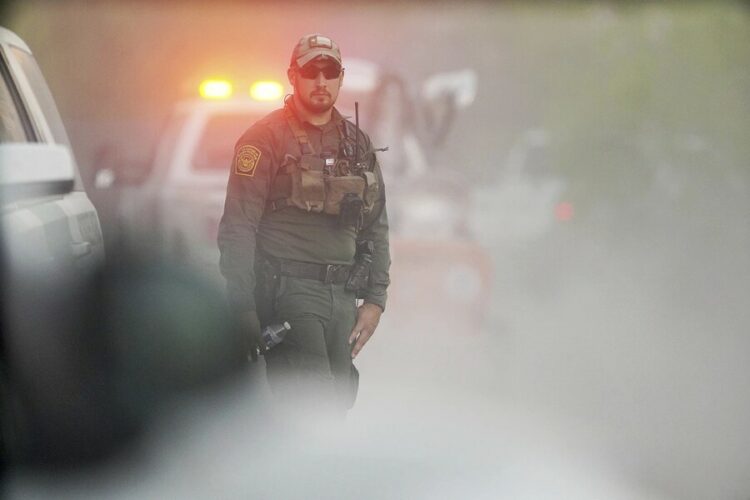In a heart-wrenching incident that has cast a shadow over the US-Mexico border, a National Guard helicopter carrying soldiers and Border Patrol agents plummeted to the ground, leaving a trail of sorrow and outrage in its wake. This tragedy occurred near La Grulla, Texas, a small town within Starr County along the Rio Grande, marking a dark day for military and border enforcement operations in the region.
The helicopter, a New York National Guard UH-72 “Lakota,” was on a border support mission when it crashed in the early hours of the afternoon, around 2:50 p.m. MST. The mission was part of a collaborative effort between the National Guard and the US Customs and Border Protection (CBP) to manage and secure the southern border, a region fraught with challenges ranging from illegal crossings to drug and human smuggling.
According to official reports and eyewitness accounts, the crash resulted in the tragic loss of two soldiers and a Border Patrol agent, with a third soldier left injured. The exact cause of the crash remains under investigation, but the incident has sparked a broader conversation about the safety of aviation operations and the perilous nature of border security duties.
Adding a chilling layer to this tragedy, it was reported that members of a Mexican cartel, notorious for their criminal activities along the border, were observed laughing and celebrating the crash. They had been monitoring the helicopter through a drone, capturing the moment it descended and crashed, then shared the footage on social media platforms, showcasing a callous disregard for human life.
This incident has not only highlighted the dangers faced by those patrolling and securing the border but has also shone a light on the audacity of criminal cartels that operate with impunity in the region. The laughter of the cartel members at the loss of American lives is a stark reminder of the ongoing conflict and the complex challenges facing border security forces.
In the wake of this tragedy, questions are being raised about the safety protocols and measures in place for National Guard aviation operations. The crash near the US-Mexico border is not an isolated incident; it follows a series of recent military helicopter crashes that have prompted concerns over the safety of such missions. Notably, the National Guard had ordered an aviation safety stand down earlier in February to review safety policies and procedures following two helicopter crashes involving AH-64 Apaches in Mississippi and Utah, which resulted in fatalities and injuries.
Moreover, the incident has brought to light the broader context of US border enforcement strategies, including Operation Lone Star, a state-led initiative to secure the Texas border. Although the helicopter was not part of this operation, its crash underscores the risks and complexities of border security efforts that involve aerial surveillance and patrol missions.
As investigations continue and the names of the deceased are withheld until their families are notified, the community, the nation, and especially the families of the victims are left to mourn the loss of their loved ones. The incident serves as a grim reminder of the dangers faced by those who serve on the front lines of national security and border protection.
In the coming days, as more details emerge, the focus will inevitably turn to ensuring that such tragedies are prevented in the future. This will likely include a thorough examination of aviation safety standards, operational protocols, and the strategies employed to combat the threats posed by criminal organizations along the border. The laughter of the cartel members in the face of this tragedy not only adds insult to injury but also reinforces the resolve of the United States to secure its borders and protect its citizens from those who seek to harm.
As the nation grapples with this tragedy, the sacrifice of the soldiers and Border Patrol agents will not be forgotten. Their commitment to their duty, even in the face of grave danger, underscores the challenges and risks inherent in protecting the country’s borders. Their loss is a somber reminder of the price of security and the ongoing battle against forces that threaten peace and stability along the US-Mexico border.







